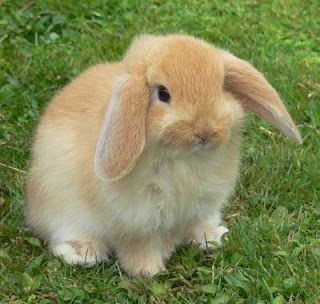Los conejos ( Oryctolagus cuniculus ) es un animal herbívoro y, como tal, es presa de los carnívoros. Sus largas orejas, delgadas y delicadas, funcionan como radares que se mueven y captan hasta los mínimos sonidos.
Su oído sumamente desarrollado le permite detectar la presencia de depredadores y ante el menor indicio de peligro puede escapar rápidamente.
Tanto las liebres como los conejos tienen orejas más largas que anchas, compuestas de una fina capa de cartílago.
Las orejas de los conejos se mueven independientemente una de otra hacia el lugar de origen de los sonidos y los mantienen siempre alerta.
Tienen un finísimo olfato que, junto con el oído, les permite estar atentos y escapar de los depredadores. Los largos bigotes son su órgano del tacto.
Cavan túneles bajo el suelo para esconderse y descansar. Las hembras hacen madrigueras para cuidar a sus crías. Se arrancan mechones de su propio pelo para construir el nido y mantener a las crías calientes.
Sus patas tienen cinco dedos terminados en uñas que les permiten aferrarse al suelo. Las delanteras son más cortas que las traseras y están adaptadas a la carrera.
Un conejo puede llegar a alcanzar una velocidad mayor a los 50 kilómetros por hora. Utilizan, también, las patas delanteras para limpiarse el hocico, de manera muy parecida a como lo hacen los gatos.
Sus dientes no dejan nunca de crecer y necesitan roer continuamente para desgastarlos. Tienen dos tipos de dientes: incisivos para cortar y molares para triturar.
A pesar de que roen, no son roedores: pertenecen a un grupo de animales llamados lagomorfos.
Rabbits (Oryctolagus cuniculus) is a herbivorous animal and, as such, is prey to carnivores. His long ears, thin and delicate work like radar that move and capture even the smallest sounds.
His hearing are highly developed allows the presence of predators and at the slightest hint of danger can escape quickly.
Both hares and rabbits have ears longer than wide, composed of a thin layer of cartilage.
The rabbit ears move independently of each other to the place of origin of the sounds and keep alert.
They have a fine nose, together with the ear, let them stay alert and escape predators. The long whiskers are touch his body.
Cavan underground tunnels to hide and rest. The females burrow to care for their young. They pluck strands of her own hair to build the nest and keep the babies warm.
Their feet have five toes ending in claws that allow them to cling to the ground. The shorter front and rear that are adapted to the race.
A rabbit can reach a speed greater than 50 kilometers per hour. Used also for cleaning the front paws muzzle so much as cats do.
Their teeth never fail to grow and continually gnawing need to wear them. They have two types of teeth: incisors for cutting and molars for grinding.
Although gnaw are not rodents: belong to a group of animals known lagomorphs.




gracias por la información. pero usted tendra un video conde explique lo que esta escrito, pasa que quiero para enseñarles a mis niños de 5 años.
ResponderEliminar